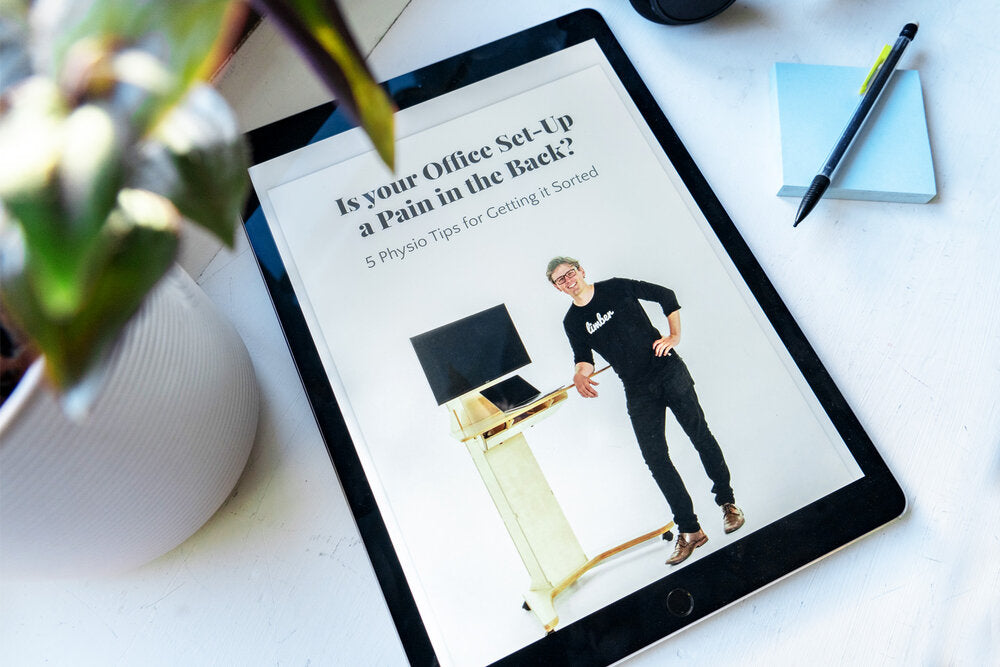5 Physio tips for getting it sorted [PLUS FREE E-BOOK]
8 out of 10 adults will experience lower back pain at some point in their lives and it is the greatest contributor to disability globally (increasing by 18% between 2005-2015), the number one cause of lost work productivity and the number one cause of income poverty. It’s a big deal.
Although back pain can be very painful and scary, there is comfort in knowing it is very well understood nowadays, most back pain recovers in 3 to 6 weeks and very rarely is back pain considered serious.
Almost all back pain is easily diagnosed, treated and there are easy ways to prevent yourself from hurting your back in the future. There really is no need for those nasty stats above anymore. So let's change that!
Kia ora, hello, my name is Bart de Vries and I am the Physiotherapist and founder behind Limber. At Limber we are on a mission to halve global disability from back pain by 2050 through connecting health sciences with good design and it was my back pain (from age 12) that inspired me to both become a Physiotherapist and found Limber.
Since COVID, Limber has been inundated with questions on how to set up the home office and trouble-shoot back pain in low cost ways. So we created an e-book to teach you how to tweak your office setup so you don’t tweak your back!
This blog gives a basic outline of 5 physio steps to setup your office so you don’t get back pain. Step 5 being the “one stretch” that has been shown to dramatically reduce your chances of getting back pain.
So, what are the 5 steps?
In this e-book I go to great lengths to give you interesting stories and facts coupled with practical guides to help you understand back pain, set your home workspace up in a way that reduces your chances of experiencing back pain and give you insights on one easy, practical and researched stretch you can do that reduces your risk of getting back pain.
Here is what we cover.
#1 Understand why you’re getting back pain
We have evolved in the direction of least effort. “If resting and inactivity reduce effort (metabolic energy cost), often considered a key target of natural selection, why is inactivity so bad for us?” asked a researcher at Yale. The current answer, it is the way we rest, rather than the amount we rest, that is the problem.
In this chapter we learn through a practical demonstration what our fingers and our back have in common, and how that makes understanding the most common reasons for back pain so easy. We call it "giving back pain the finger!"

#2 Set yourself up to move, a lot.
The best posture is the next posture. Setting yourself up to move is setting yourself up for success.
In this chapter we take a practical dive into the different ways to set up your workspaces to bring more movement into your workday without even thinking about it. How to use design to influence your behaviour so you don't need to constantly be making"the healthy choice" with will power, but they can become healthy choices that happen by default.
We look at workstation set up fundamentals, going low and getting high (not that kind of high). Plus we introduce you to the latest kids on the workspace block "Active Resting Postures", what they are, where they have come from and what benefits they bring.

The low hack.
#3 Let's talk chairs
As a physiotherapist I feel an obligation at this point to bring attention to a few things that are quite obvious once mentioned.
Chairs are to movement what refined sugar is to the diet. Chairs are an obstacle to movement, lulling you into a false sense of comfort that makes not moving extremely easy. This in turn contributes to a cascade of metabolic, neck, gut, breathing and shoulder problems long term and reduces work performance in the short term.
There is no such thing as an ergonomic chair. Backs don't need "support" they need movement.
The traditional seating position is the most likely contributor to your back pain, and it is the #1 aggravator of back pain.

More movement means less pain, more energy and more focus going into your work.
#4 Get your screens right

Kneeling example.
Where your eyes go, your body follows. In this chapter we go look into screen position and how this effects the spine.
#5 The “One Stretch”
There has been a lot of research into back pain and there is one incredible stretch that has become a go to for preventing back pain, and in ~66% of cases treating it too. Plus it has been shown to reduce the intensity of a back pain episode and speed up your recovery.
It is bending backwards.
In this chapter we look at the nuances of how to do this stretch and learn about the army recruits and hospital care workers that the research on this has been done on.
This stretch, plus a lot more facts, how to’s and stories are in the free e-book available for FREE download here.
Download free e-book

The free ebook, that you can download by clicking here gives you all 5 steps in full detail, with the how to’s, the stories and the science to help you get a better understanding of how to set-up at work to not get back pain.





Leave a comment
This site is protected by hCaptcha and the hCaptcha Privacy Policy and Terms of Service apply.